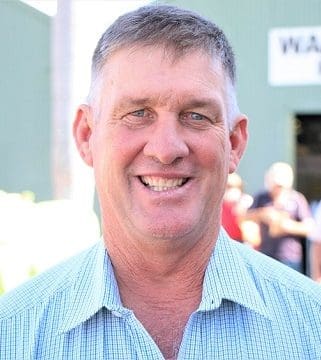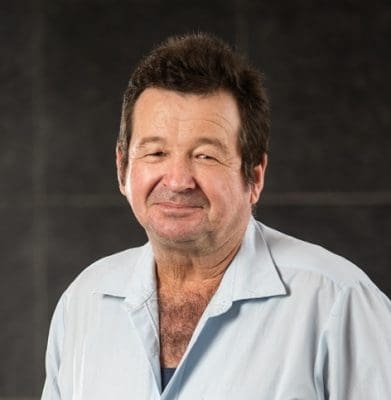FOR several months the process to create a new democratically elected body to represent all grassfed cattle producers has appeared to be quietly on track to deliver a long-awaited cooperative agreement between the various grassfed producer groups involved.
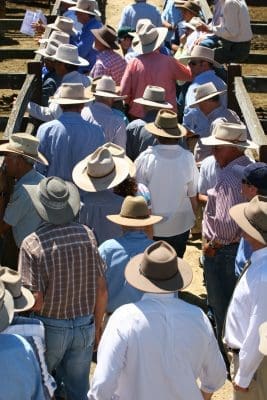 But getting closer to the pointy end, clear divisions between groups are now emerging.
But getting closer to the pointy end, clear divisions between groups are now emerging.
Some groups involved are not happy that the process of finalising the constitution for Cattle Australia has been handed to Cattle Council of Australia to complete, saying that move was not agreed to by all stakeholder groups and undermines the spirit of collaboration needed to create a united industry body.
On the other hand are claims that groups now speaking out against the process, despite getting most of what they have asked for, are failing to compromise at the final hurdle.
Adding to the tensions have also been claims of some stakeholders being “muted” at a recent online meeting (see more detailed below).
Reform process entering final stages
A fundamental aim of the reform process has been to bring together fragmented grassfed groups and create one united cattle organisation with an ability to speak with the power and influence that the sector’s size and scale warrants.
There have also been long-running calls for a more democratic system of national industry representation that enables all grassfed cattle levy payers – not only those who pay a membership fee to a State Farm Organisation or directly to Cattle Council of Australia – to be able to vote on who represents them nationally, to contribute to industry policy setting, and to stand to represent their industry if they wish.
How to sustainably fund a new system of national industry representation also remains a key ongoing challenge.
Since October last year, a grassfed cattle industry Restructure Steering Committee (RSC) – comprising two representatives from CCA, two from State Farm Organisations, two from Cattle Producers Australia and two from the Northern Pastoral Group, in addition to an independent chair – has been working to develop a draft constitution and funding plan for the new organisation, to be called Cattle Australia.
Groups claim terms of reference not followed
The terms of reference under which the committee was convened included objectives to guide the process and implement the formation of “a new united, well resourced, effective, representative leading peak industry body for grass-fed cattle producers and their industry”, and to realise the funding and formation for the New Peak Body by 1 July 2022 (among other objectives).
The Terms of Reference also stated that ‘the Steering Committee will convene on and from October 2021 and will cease to exist when the New Peak Body Board is installed’.
The wording suggests the RSC’s role was to see the process through to the creation of Cattle Australia.
However, a decision to wind up the RSC on July 1, 2022 and hand the yet-to-be completed Cattle Australia constitution to CCA is causing consternation among other groups involved.
In a letter sent to all stakeholders prior to the Industry Leaders Forum on June 30, Cattle Producers Australia directors Paul Wright and Cameron McIntyre, who have seats on the RSC, said no such agreement was reached by the RSC to hand the draft constitution of Cattle Australia over to CCA on June 30.
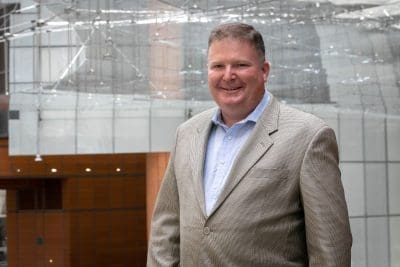 Groups are now claiming that for the second time in as many collaborative attempts to achieve a reform, Cattle Council of Australia has “gone its own way”.
Groups are now claiming that for the second time in as many collaborative attempts to achieve a reform, Cattle Council of Australia has “gone its own way”.
In 2018, two years after agreeing to a proposed new structure that would have seen its SFO-based board replaced with directors who were directly-elected by levy paying producers, the CCA removed itself from the implementation committee overseeing the transition to a new body. In doing so it cited at the time a lack of “political momentum” and failure to gain funding support from the Federal Government.
While CPA says no agreement was reached by the RSC to hand the process over to CCA on June 30, the RSC independent chair Andrew Macaulay says that the winding up of the RSC was foreshadowed both in the RSC’s project plan and in public statements throughout the process.
Cattle Council of Australia says it has made major compromises, including agreeing to wind up operations and make way for Cattle Australia, and is urging the industry to come together to ensure producers have a modern, strong and united peak industry council.
It also disagrees with the suggestion that other groups have been squeezed out of the restructure process, stating that everyone who was on the Restructure Steering Committee has been invited to join a Restructure Stewardship Committee for the remainder of the process, and is awaiting a reply to that invitation.
‘We can’t let perfect be the enemy of good’
In a statement to media on Friday, CCA President Lloyd Hick said Cattle Council is now preparing to transition to the new peak industry body, Cattle Australia.
“We are committed to substantially improving representation through Cattle Australia,” Mr Hick said.
“Cattle Australia’s constitution was built from scratch and will create a completely new organisation.
“It governs how representatives are elected and how decisions are made, giving producers greater control over the representative body’s priorities.
“This constitution was developed with substantial input from all grassfed beef representative bodies.
“We’ve all had to make compromises, and no more than CCA, which has agreed it will cease to exist.
“We must all act in the interests of producers and remember our goal of a stronger beef industry.
“No one got everything they wanted, but we can not let the perfect be the enemy of the good.”
He said CCA was asking all organisations across the industry to stay involved.
“We will remain open to engaging positively with representatives from groups such as Cattle Producers Australia, the Australian Beef Association, for the good of our industry.
“CPA and ABA have provided considerable input into developing the new Cattle Australia constitution, and I thank them for their passion and commitment.
“Cattle Australia will soon hold elections for directors, and I urge CPA and ABA representatives to put up their hands.
“This is a once-in-a-generation opportunity for us to unite our industry and I sincerely hope it is embraced by all parts of the industry.”
A CCA spokesperson told Beef Central the next phase in the process will be a meeting of SFOs this month to agree whether to adopt the new constitution. Such an agreement is a necessary legal precursor for CCA so it can make way for Cattle Australia to become the new peak industry council and take on CCA’s legislated role and assets.
 Mr Macaulay has told Beef Central that the RSC progressed from a consultation process that gave all 50,000 grassfed levy payers the opportunity to have their say, and then involved input from all industry organisations. He said all industry organisations involved agreed that the peak industry body needed to be democratised and have transparent governance.
Mr Macaulay has told Beef Central that the RSC progressed from a consultation process that gave all 50,000 grassfed levy payers the opportunity to have their say, and then involved input from all industry organisations. He said all industry organisations involved agreed that the peak industry body needed to be democratised and have transparent governance.
This led to the groups settling on “plan 4b” as the way to deliver democracy, and he said the RSC’s work substantially realised plan 4b.
“The gaps in the plan 4b, as it came to the RCS, were voting structures and the funding model, the former now having been defined, and the latter now having a clear, accountable and observable transitionary timeline.”
He said the RSC then took its plan back to industry to seek the opinions of individual producers.
“It was very clear that the industry wants, in this order: 1. A single peak voice for the grassfed industry. 2. That body to be democratic. 3. That body to be agile.”
He said independent legal advice to the RSC, and in a separate process via an independent legal advice sought by the CCA, and discussions with DAWE, MLA and RMAC, showed that transitioning Cattle Council of Australia to Cattle Australia would be the safest and swiftest pathway to reform and democratisation.
“Cattle Australia is a new organisation, with an entirely different constitution and governance model than CCA,” he said.
He said the Restructure Steering Committee formally wound up on 30 June, as intended, but all members have a standing invitation from Cattle Council to remain engaged in the final stages of the restructure.
He said the CCA Board sub-committee running the process plans to liaise with the industry stewardship committee/former RSC fortnightly on the same schedule the RSC met.
CCA was awaiting replies to that invitation.
The handover of the Cattle Australia process to the CCA, and the perception that CCA has taken control of the process in its final stages, has become a major point of contention for other groups involved.
They have voiced concerns it was not agreed to by the full RSC and goes against the fundamental aim and spirit of all groups working together to create one united cattle organisation.
Muted voices
Some stakeholders also say they were muted to prevent them from speaking at the most recent Industry Leaders Forum online meeting on June 30, which involved about 30 industry representatives.
Former CCA chair Markus Rathsmann has told Beef Central he was “deliberately cut off, verbally dismissed and then talked over” as he attempted to put forward his concerns to the online forum that the steering committee process had become dysfunctional and had not adhered to the terms of reference and timeline set eight months ago.
Cattle Producers Australia representatives are also understood to have been muted during what was evidently a heated meeting.
When asked about those claims Mr Macaulay told Beef Central the June 30 online Industry Leaders Forum webinar was intended to be used as a network to communicate the work of the RSC to a wider interest group.
The purpose of both meetings was to present a substantial volume of information and complex detail, covering the deliberations and recommendations of the RSC, the governance and voting structure of the draft constitution completed by the RSC, the branding package and funding application drafts, and the next steps and timeline for the reform process, he said.
“The meeting included a Q&A session for 31 key beef industry figures, so they could ask questions about the restructure,” he said.
“We had to move on from speakers who were simply airing opinions, in respect to those who had genuine questions to ask.
“All attendees had been informed of the meetings rules ahead of time.”
Concerns have also been voiced by groups that the end-result will be a change of name and appearance but not the fully democratic outcome for grassfed producers the process was created to deliver .
Mr Rathsmann said he is concerned that handing the process back to the full control of CCA with the membership model as it is currently proposed will deliver no significant reform other than “a rebadged Cattle Council”.
He emphasised that he did not have “an axe to grind with CCA”, but felt that if other groups sat outside the process, Cattle Australia “won’t be a unified voice”.
CPA members voice concerns about RSC process
Cattle Producers Australia, which was formed from the Reform Implementation Committee developed to drive the previous reform attempt which ended in 2018, has also raised concerns about flaws in the process.
In a letter circulated around industry stakeholders ahead of the June 30 Industry Leaders Forum, CPA representatives Paul Wright and Cameron McIntyre, who were also the CPA’s representatives on the RSC, have highlighted what they claim were multiple shortcomings in the process which have led to outcomes at variance with the RSC terms of reference.
Their claims include that initially agreed positions were not adhered to over time, deliberations lacked leadership and direction and that no agreement was reached by the RSC to hand the constitution and management of the transition to Cattle Australia to Cattle Council of Australia on June 30.
Their letter stated that the CA constitution has not been agreed upon and the most recent draft does not encapsulate the requirements of the democratically-elected Cattle Australia structure demanded by cattle producers. Among its concerns the CPA letter says that in its view, the legal firm charged with compiling the constitution had not “been appropriately briefed”, details of the weighted voting system for the election of a portion of the CA board agreed to by the RSC in February are yet to be finalised, and no arrangement has yet been reached in relation to verification of the expenditure of the $500,000 in seed funding granted to the CA process by the Federal Government.
The CPA letter is calling for the RSC to appoint a new implementation/transitional facilitator to develop and oversee the implementation of a well-resourced representative structure as the cattle industry’s peak industry council by the end of 2022.
Six representatives of the Australian Beef Association and Australian Cattle Industry Council wrote to new Federal Agriculture Minister Murray Watt this week outlining their concern about the direction of the restructure process, stating the process has not followed the terms of reference and timelines and has not implemented the Plan 4b approved by the Industry Leaders Forum last October.
‘Like trying to achieve peace in the Middle East’
Earlier this year former minister David Littleproud likened the challenge of bringing grassfed cattle industry groups together to reach an agreed position to trying to “achieve peace in the Middle East.”
He also stated at the time that the Australian cattle industry was on the cusp of achieving a transformation reform of national producer representation that has been sought for decades, and warned industry not to let the “pursuit of perfection” get in the road and derail the progress that has been made under the RSC.
Beef Central has contacted Mr Littleproud’s office this week seeking his views on where process is up to, and will publish his response if and when received.
WA cattle producer Geoff Pearson, who sat on the Restructure Steering Committee for CCA, reiterated calls for industry groups to work together to see the process through.
“The new constitution has been drawn up from scratch, and will create an entirely new organisation, with new rules around who is eligible to be a member, who can run for office and how decisions are made,” he said.
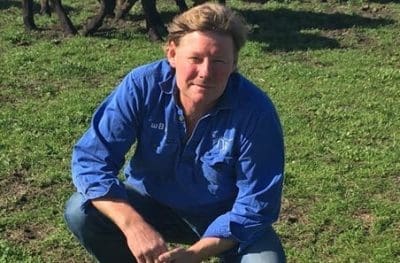 “Cattle Australia will deliver a significantly more democratic representative model by allowing producers to directly elect their representatives on the board.
“Cattle Australia will deliver a significantly more democratic representative model by allowing producers to directly elect their representatives on the board.
“Cattle Australia membership will be free in the first year and open to any levy-paying producer.
“Cattle Australia will initially be funded the same way Cattle Council is funded now.
“The Cattle Australia board will be responsible for developing a long-term, sustainable funding model to take the organisation forward.
“The CA constitution will go before CCA’s founding members later this month for endorsement, before a special general meeting.
“I would urge all members of the Restructure Steering Committee and Industry Leaders Form to consider putting up their hand for the upcoming Cattle Australia board elections.
“Cattle Australia will be a great opportunity for all cattle representatives to work together, rather than fighting each other.”
The following timeline has also been provided by the RSC for the advent of Cattle Australia:
Timeline to advent of Cattle Australia
– September 2022 – CCA Board will hold a Special General Meeting to adopt the new constitution. If the new Cattle Australia constitution is ratified, the CCA Board will initiate the election process for the new Cattle Australia Board.
– September to November 2022 – Cattle Australia Board of Directors election process period.
-
- 1 October 2022 – Nominations close.
- 15 October 2022 – Voting period opens.
- 15 November 2022 – Voting period closes.
– 22 November 2022 – Annual General Meeting with the ratification of the new Cattle Australia Board, with Cattle Australia officially launching as the new peak body for the grass-fed cattle industry.

